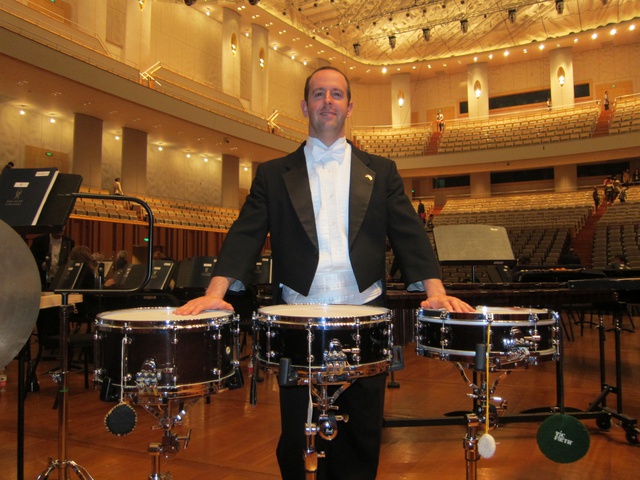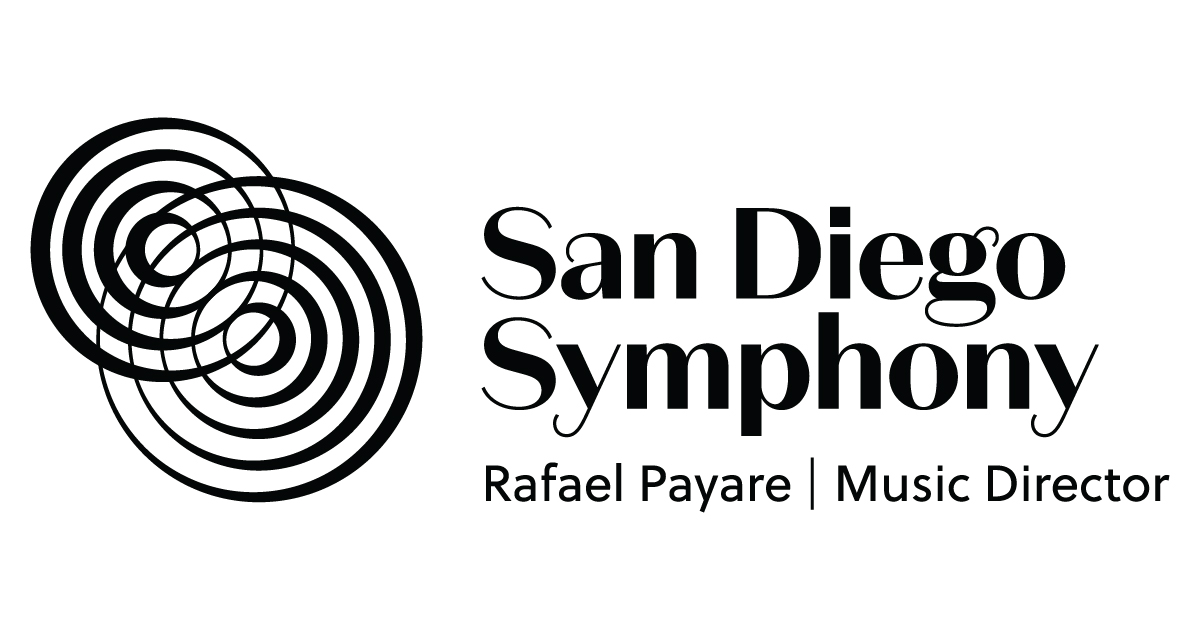In the Musicians' Lounge: Gregory Cohen, principal percussionist

Principal percussionist Greg Cohen took a break between rehearsals to chat with us in the musicians’ lounge about how he gets the percussion ensemble ready for performance night and how his career led him to holding a bag of knives and forks on stage at Carnegie Hall.
SDSO: What is a typical day like for you?
GC: I teach at San Diego State in the percussion program. I have 12 students and I direct the percussion ensemble. I’ll teach for 9 hours and then we have rehearsal so I’m there for 12 hours basically. Tuesday through Sunday I’m basically at the Symphony -- we usually have rehearsal Tuesday and Wednesday, double rehearsal Thursday and shows Friday through Sunday.
My whole existence basically revolves around my wife, daughter, SDSO and SDSU.
SDSO: Do you have any specific rituals you do before a concert?
GC: It is highly dependent on what I have to play that night. For instance, I’m playing some bass drum this week. The bass drum is two large, 36-inch calf heads and it’s very sensitive to the temperature and humidity so I have to get here early. Especially being here in Southern California, if it’s dry (and hot), we have to get here early and put some humidity in it, otherwise it sounds like a tom-tom – it’s really high – so we have these huge sponges that are inside the bass drum that we get wet and basically put them in there. It takes a good 20-25 minutes for it to come to proper humidity.
If you’re playing snare drum you have to make sure your hands don’t get warm – it’s a very technical thing – or if you’re playing tambourine or something like that, make sure you have the right amount of friction. So it’s highly dependent on what your specific task is for that day.
SDSO: Can you describe your rehearsal process for a concert?
GC: As principal percussionist my process leading up to any program has greatly to do with organizing anything and everything surrounding with the program. I take the (percussion) parts and figure out how many players are needed so I can communicate with personnel, if additional players need to be hired, who they should be given the artistic need of said parts. I’ll coordinate with Paige … In terms of what large instruments the stage crew has to move on stage and where they should be and if we need to purchase additional instruments. I’ll talk to the stage crew specifically about stage configuration and instrument needs; if we have multiple programs how long we have between switching programs … how are we going to come up with multiple sets and how they will move? So it’s a big moving chess game, if you will.
Of course, I have to make assignments for all the players. There are all these parts but no one knows what to play until I tell them what to play. Sometimes there’s a percussion score and it will have all these parts and I’ll say, “you play this note on measure one,” and so on. Sometimes, there are three lines of percussion but I have five players so I’ll try the best I can to find parts for all five of them. Really for me, the most of my preparation is managing of everything ahead of time. When we get to rehearsal, there’s the right amount of players, the parts are assigned properly and all the instruments are there and working correctly. The big challenge is getting there.
SDSO: How did you get into playing percussion as opposed to other instruments?
GC: I grew up in the Midwest, where band started in fifth grade. We had music teachers come in from the symphony to demonstrate instruments.
As I recall, you got out of English class to play in band so I liked that. My English teacher mother doesn’t like that part of the story, but I think that’s the truth and it seemed easy. Two sticks, what’s the problem, right?
SDSO: How do you describe percussive instruments to someone not familiar with them?
GC: It’s anything you can shake or scrape. Anything – and composers are constantly reinventing what anything is. Here we were in Carnegie Hall on our first big orchestra tour to New York and (a composer) wrote a part for knives and forks in a bag – like shaking in a bag. So there I was in Carnegie Hall, with a Vons bag shaking knives and forks. Six years of orchestral training and here I am, shaking knives and forks.
Catch Greg on percussion – no promises of onstage knives or forks – throughout San Diego for the Symphony’s It’s About Time Festival and click here to watch Greg talk about the festival and his involvement.
This interview has been edited for clarity. This post was written by Kelly Hillock, marketing assistant for the San Diego Symphony.
Share ArticleBack to all posts
